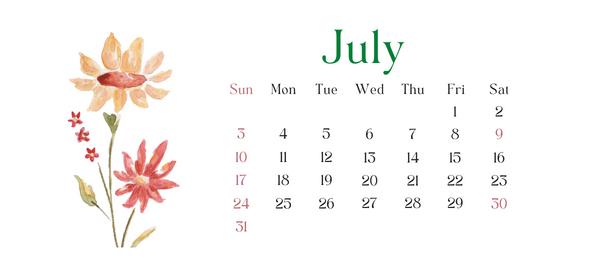
Foraging Calendar: What To Forage In July
Foraging can be a bit confusing. When I first started I was hunting Morels in August, when they grow in April/May. If you’re new to this a calendar for foraging isn’t exactly available.
The Lost Herbs has decided to remedy that by putting out a monthly foraging guide. This month we’re covering July foragables. In July we think of hot dogs, fireworks, and pool days. But July is also a great season for hiking and foraging. Bring a fun foraged side dish to your next barbeque with this list of foragables in your zone.
The USDA Hardiness zone Map is an attempt to divide the country into zones that give us some idea of whether certain plants can be grown in any given area. The primary piece of data used to delineate the zones is the average annual winter temperature experienced in that area. This could just be a list of forageables but the temperature varies so much across the U.S.A.
The Lost Herbs want this to be a list for everyone of our readers no matter the zone you live in.
Lamb’s Quarters
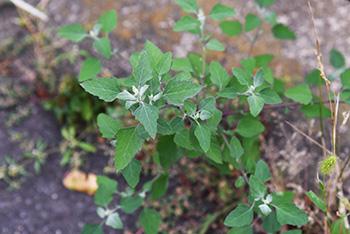
Lamb’s Quarters are incredibly nutritious herbs that many think of as a “weed”.
They are high in fiber, and protein and are loaded with both Vitamins A and C. Lamb’s quarters are also high in manganese, calcium, copper, and have a bit of iron, and are high in both omega-3 and omega-6 fatty acids. Lamb’s Quarters (Chenopodium album) grow in hardiness zones 3-10.
Chanterelle mushrooms
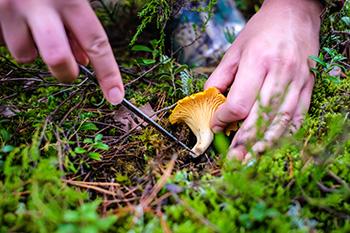 Chanterelle mushrooms are a bright yellow-orange with a flat cap. Chanterelle mushrooms are one of the best-tasting wild mushrooms. Chanterelle mushrooms are a good source of riboflavin, copper, and vitamin D. Chanterelle (Cantharellus) grows in zones 4-9.
Chanterelle mushrooms are a bright yellow-orange with a flat cap. Chanterelle mushrooms are one of the best-tasting wild mushrooms. Chanterelle mushrooms are a good source of riboflavin, copper, and vitamin D. Chanterelle (Cantharellus) grows in zones 4-9.
*Be careful of look-a-likes such as Jack-o-Lanterns which are highly toxic. They are orange all the way through while Chanterelle’s are white inside.
Purslane
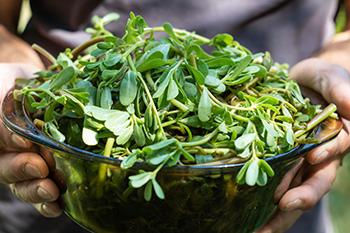 Purslane leaves are succulent and grow in an alternate fashion on the stem which is thick and reddish in color.
Purslane leaves are succulent and grow in an alternate fashion on the stem which is thick and reddish in color.
It is one of the few vegetables that are rich in omega-3 fatty acids, which are important to support healthy arteries and can help prevent strokes, heart attacks, and other forms of heart disease.
In fact, purslane has the highest-recorded levels of omega-3 fatty acids of any land-based plant. Purslane (Portulaca oleracea) grows in hardiness zones 6-10. *Be wary of its look-a-like Spurges; they are poisonous. Spurges exude white latex when broken.
Wild Plums
Wild Plums grow on deciduous shrub-like trees. The small round fruits are approximately 2 to 3 centimeters in diameter and are a deep maroon to ruby red when fully ripe. Wild plums contain vitamin A, beta carotene, and potassium. The plums can simply be eaten fresh as a raw snack, but are usually cooked. Wild Plums (Prunus americana) grow in hardiness zones 3-8.
Garlic Mustards
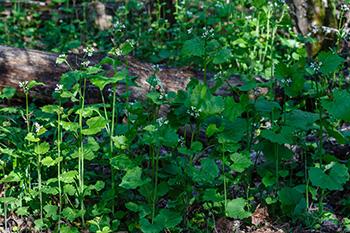 Garlic Mustards are easy to spot. They have unique deep green triangular leaves with distinct venation.
Garlic Mustards are easy to spot. They have unique deep green triangular leaves with distinct venation.
Garlic mustard greens are very nutritious as they have substantial amounts of vitamins A, C, E, and some B vitamins.
They also contains potassium, calcium, magnesium, selenium, copper, iron, and manganese as well as omega-3 fatty acids. Garlic Mustard (Alliaria petiolata) grows in hardiness zones 6-8.
Oyster mushrooms
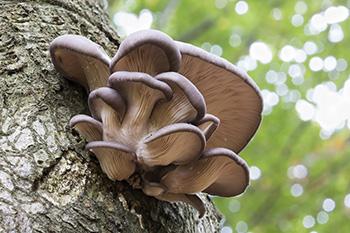 Oyster mushrooms are a common fan-shaped fungus that grows in shelf formation.
Oyster mushrooms are a common fan-shaped fungus that grows in shelf formation.
They are named oyster mushrooms after their white oyster-shaped caps.
Oyster mushrooms include minerals such as phosphorus, potassium, copper, iron, magnesium, zinc, manganese, and selenium.
They also have smaller amounts of folate, vitamin B6, and thiamin. Oyster mushrooms (Pleurotus ostreatus) grow in hardiness zone 3-8.
Elderflowers
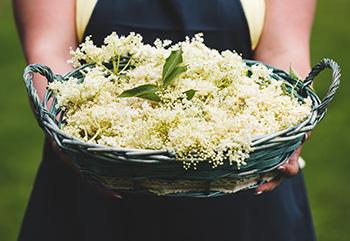 Elderberry Flowers grow in white umbels about six inches or so in diameter on the elderberry shrub. The flowers bloom in the very first weeks of July. Elderberry flowers can be used in tea to treat sinusitis, colds, and constipation. Elderberry Flowers (Sambucus) grow in hardiness zones 3-7.
Elderberry Flowers grow in white umbels about six inches or so in diameter on the elderberry shrub. The flowers bloom in the very first weeks of July. Elderberry flowers can be used in tea to treat sinusitis, colds, and constipation. Elderberry Flowers (Sambucus) grow in hardiness zones 3-7.
The leaves, stems, bark, and roots of the plant are toxic
While all of these are located in America, we don’t want to leave our overseas readers out of the loop. Countries like Canada and Australia are also abundant with delicious plants.
Canada’s weather aligns more with the United States and many of the plants above can grow in Canada’s ecosystem. Canadians can use the hardiness zones to apply to their regions.
Here’s a short list of foragable plants you can find in the Canadian summer month of July.
Red Huckleberry
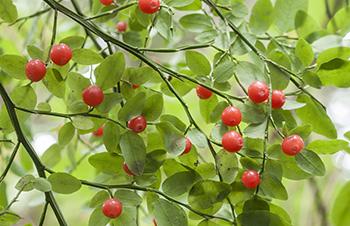 Red Huckleberry (Vaccinium parvifolium) is a good source of Vitamin C and many prefer their flavor over cranberries.
Red Huckleberry (Vaccinium parvifolium) is a good source of Vitamin C and many prefer their flavor over cranberries.
The bush is easy to identify in summer when the bright red berries are noticeable.
Leaves are glossy green on top and lighter in color underneath.
Red Glasswort
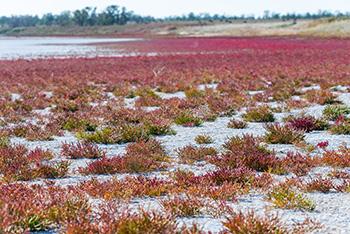
Red Glasswort (Salicornia spp.) has jointed stems ranging in color from bright green to deep red. The leaves are scale-like formations along with the segments of the stem.
The efficacy of Salicornia herbacea against oxidative stress, inflammation, diabetes, asthma, hepatitis, cancer, and gastroenteritis have been reported.
Saskatoon Berry
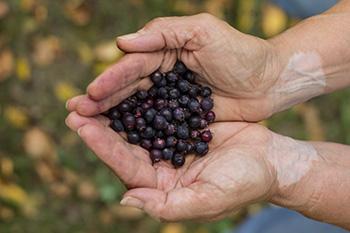 Saskatoon Berry (Amelanchier alnifolia) grows as a shrub to small trees, 6 to 12 feet tall with oval leaves, white flower clusters, and bluish to blackberries. Each 100 g of fresh berries contains 203 mg potassium, 65 mg calcium, 32 mg magnesium, 26 mg phosphorus, and 1.2 mg iron.
Saskatoon Berry (Amelanchier alnifolia) grows as a shrub to small trees, 6 to 12 feet tall with oval leaves, white flower clusters, and bluish to blackberries. Each 100 g of fresh berries contains 203 mg potassium, 65 mg calcium, 32 mg magnesium, 26 mg phosphorus, and 1.2 mg iron.
Australia lies in Plant Hardiness Zones 7 through 12 with some variations across regions and seasons.
The caveat with foraging in Australia is it is completely illegal without a permit. Without the 104$ permit, you can be fined anywhere from 10,000 to 110,000 dollars depending on where you foraged.
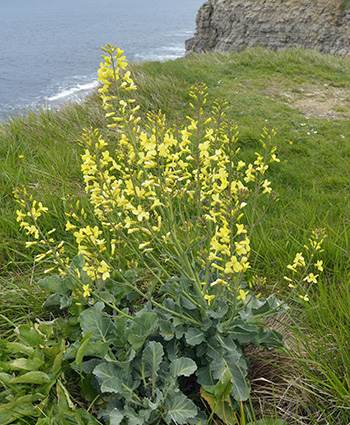
July is also winter for Australia so the foraging will not be at its peak for many plants. If you have your license or it’s on your private land here’s some awesome plants to find!
Wild Cabbage
Wild Cabbage (Brassica oleracea) forms a loose head of large green or blue-green leaves often with wavy edges and/or purple tints. It is rich in vitamin B6 and folate. Wild Cabbage is also high in fiber and contains powerful antioxidants.
Dandelion
Dandelion (Taraxacum) is a flowering weed with a bright yellow flower and distinguished sharp leaves. Dandelion greens are high in vitamins A, C, E, and K and also provide the mineral calcium.
Sowthistle
Sowthistle (Sonchus) Sow thistle usually has many bright yellow flowers sprouting out on each stalk. It is rich in essential fatty acids and minerals and nutrients like zinc, manganese, copper, iron, calcium, and fiber.
With this list, you can bring a delicious wild plum pie or dandelion salad to your next barbeque. Comment below your favorite forages for July and subscribe to our email list to keep up with next month’s foraging guide.
You may also like:
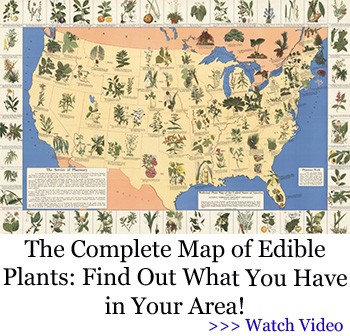 10 Mushrooms You Should Forage This Summer
10 Mushrooms You Should Forage This Summer
I Stopped Spending Money At The Pharmacy By Growing These 10 Plants (Video)
People Weed Out These Plants, But Here’s What You Should Do Instead








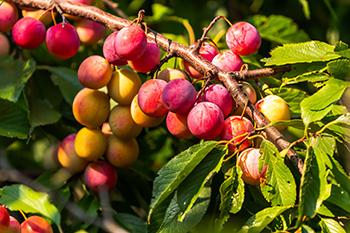
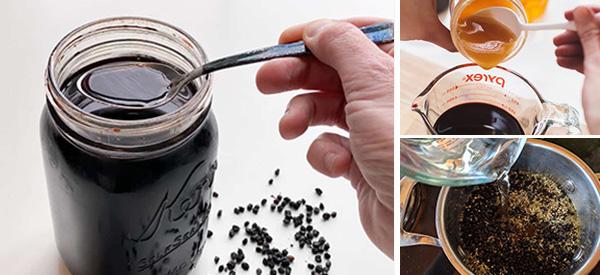
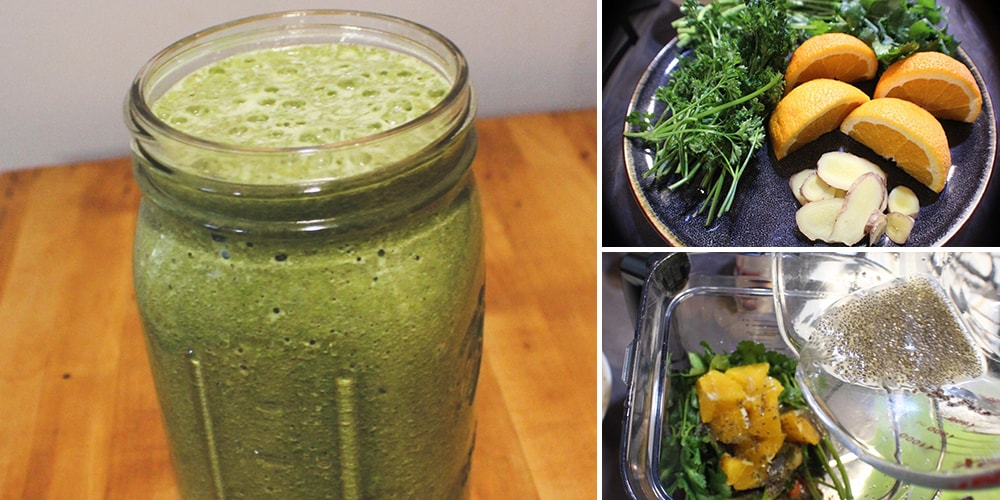
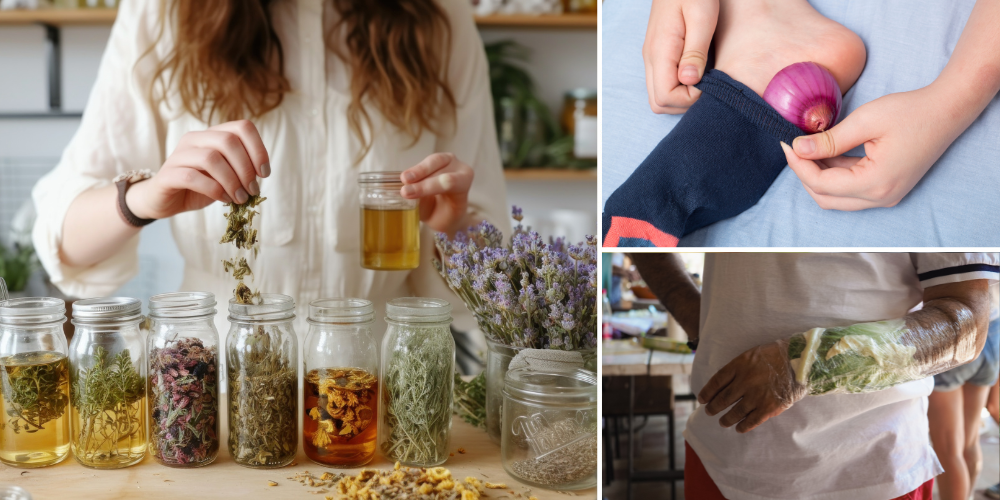
What are the plants that when boiled down are good for killing pain?
Wild lettuce or also called opium lettice.
I have SO MUCH wild lettuce. I wish I could give you some!
I have 2 plants that I can’t decide which is wild lettuce. One has the spines on underside of leaves but doesn’t have much for a flower before it wisps away like a dandelion. The other has same shape leaf, milky discharge, but not spined under leaf, also about 7 ft. tall and hasn’t flowered yet. any idea? email me.
mustard garlic, inn my area, is gone by the end of April. Casts doubt on this whole article.
I suspect most articles like this are written for more northern climates. In KY, we are about 3-4 weeks ahead of WI, where I’m from.
Thanks. The pictures are helpful. I knew about some but not all.
I live in the UK…. Please do some updates for us too each month!
I like the foraging calendar I would like to see one for each month
I live in Australia, do you have a foraging guide for us?
Would love to be able to do this.
I recommend showing a photo of the ones that look similar to the herbs but are actually poisonous. As a new forager, I would be so scared of picking a poison herb I might not forage that herb at all.
I live in Northern California and I have an abundance of huckleberries. No berries yet, though.
anyone have a complete list of edible wild plants in West Texas
No, but I found these resources you might find beneficial:
https://www.foragingtexas.com/
The link worked when I went to it. It appears to be comprehensive site and up to date.
Edible Plants of Texa
http://www.wildlifemanagementpro.com/2010/06/13/edible-native-plants-of-texas/
You Tube videos, search the titles
Food is Free- Wild Edibles of Texas
Introducing Foraging Texas
Wish there was some info on plants you could forage in Hawaii
Unfortunately, I recently moved to a desert and none of these plants grow here. I’m stuck trying to figure out cactus fruit and mesquite pods!